
International Day of Women and Girls in Science 11 February
The United Nations, in 2015, launched the “2030 Global Objectives” for sustainable development. Among these objectives, some work as a palliative solution to the lack of representation of women in the so-called male sectors, notably the STEM sector (Science, Technology, Engineering, and Mathematics). They aim to promote gender equality and encourage women and girls to participate fully in the development of the science and technology sectors. According to UNESCO statistics, the participation of women in the science and technology sectors is still insufficiently represented. Indeed, less than 30% of the world’s researchers are women. Also, according to research conducted by the same organization, between 2014 and 2016, only 30% of female students were interested and chose courses related to STEM fields in higher education. On the other hand, only 3% of students worldwide are women in the fields of ICT, mathematics, and natural sciences. This shows how much more needs to be done to include more women in STEM.
International Day of Women and Girls in Science aims to increase and promote the participation of women and girls in all fields of science. Through this initiative, the UN and the world recognize the importance of including more women who contribute to the progress of science. Women such as Ada Lovelace, Marie Curie, Grace Hopper, Katherine Johnson, and many others are role models in these areas. Their impact is still being felt today; however, these examples are unfortunately still few.
Over the past few years, many organizations and communities have sprung up and provided many types of services aimed at encouraging young women and girls to move or redirect themselves into the field of science or technology. Through a variety of actions, these organizations aim to promote STEM but also new technologies among women, to spark their interest and to improve gender balance.
For the International Day of Women and Girls in STEM, Digital Kidz has compiled a list (below) of organizations and communities working in Switzerland for the promotion of girls and women in these sectors. We also provide a list of inspiring books, activities, games, and applications (below) that break the stereotypes of an environment too often represented to be male-oriented. As a result of this, women and girls interested in new technologies can learn about and identify with women who have worked or are working in these fields.
Moreover, one only has to look at the study carried out for the past 50 years, which consists of asking children to “draw a scientist”, to highlight the stereotypes perceived by children (see studies on this subject). While in kindergarten, children draw as many women as men scientists in a balanced way, this representation seems to change when reaching secondary schools. Children’s drawings in schools often represent men scientists. Sociologists in this study explain this change by children’s exposure to gender stereotypes as they grow up. This tendency is even more pronounced among girls. At the age of 6 years old, 70% of girl’s drawings represent women scientists. By the age of 16, the number drastically drops to 25%.
In the context of the International Day of Women and Girls in Science, at Digital Kidz, we would also like to highlight a recent campaign “ Missing Code ”. It is a campaign launched by the international organization “ Girls Who Code “. Through this campaign, the organization’s objective was to highlight the essential contribution of women in programming. Through a video and an interactive portal, the campaign shows what the Internet looks like without the participation of women programmers. It makes us discover a “broken Internet” and all the “glitches” that some of the most popular platforms such as Netflix, Pinterest, Instagram, etc. on would encounter without the contribution of women programmers. A simple and clear message that underlines the need for women in this sector!
List of organizations and courses in Switzerland inspiring young girls in science and technology
- MOD-ELLE
- Elargis tes Horizons Geneva Branch
- Coding Club des Filles EPFL
- Empowrement Lab
- Youth Intelligence Agency YIA Girls
- RIGHTSTECH Women
- Girls can code
- ImpactIA
- Futurekids
- TechSpark Academy
- TechLabs
List of organizations supporting women in science and in technology in Switzerland. These communities offer various services (networking, webinars, meetings, master classes, training). The objective is to have an impact on society for a better gender balance in these fields.
List of inspiring books, activities, games and applications that break down stereotypes of an environment too often represented or adapted to a male world in the fields of science and technology.
 |
Without a doubt, Kodable is the most complete application for learning coding. It is intended for children aged from 5 to 8 years. It provides a lot of information about programming and they are quite easy to assimilate. |
 |
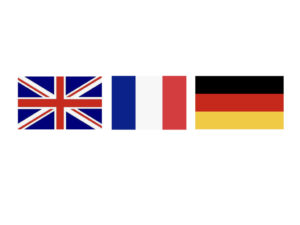 Mini Sphero is a connected mini robot the size of a ping-pong ball. This technological ball provides a lot of entertainment thanks to its Sphero application. |
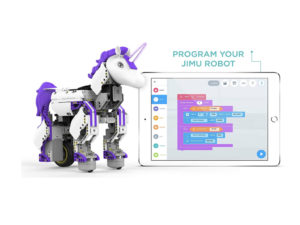 |
STIM Jimu Robot Mythical UnicornBot is a kit to learn how to build a robot and how to program it with 3D animated instructions! |
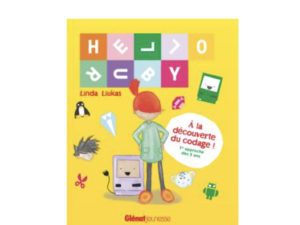 |
« Hello Ruby » is a series of children’s books. Thanks to the latter, toddlers can learn programming and develop an interest in activities related to new technologies and the web. |
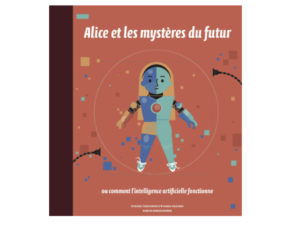 |
Alice et les mystères du futur.In this book, the children will meet Alice who welcomes a robot into her family. This robot seems to be able to do a lot of things and answer a lot of questions, yet this robot does not know how to climb stairs. This is what will arouse Alice’s curiosity, who will seek answers from her uncle, a researcher in artificial intelligence. Throughout this story, young readers will discover with Alice how self-learning machines and autonomous cars work, as well as what differentiates humans from robots. |
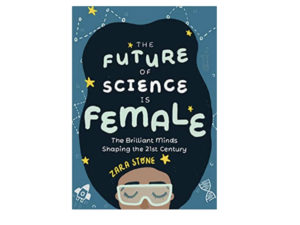 |
The Future of Science is Female.This book aimed at millennials and teenage girls proves that there are brilliant minds among women in science. It also tries to erase the idea that science is only reserved for men. With chapters that examine current and global issues, author Zara Stone highlights women scientists, particularly in Silicon Valley, who are working or have found solutions while overcoming the challenges they face in these still male-dominated fields.
|
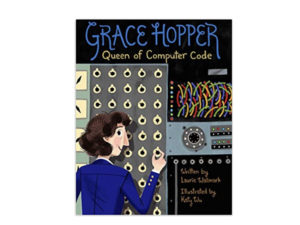 |
Grace Hopper, Queen of Computer Code. This book illustrates in a child-friendly manner (from 7 years-old) the life and fascinating story of a pioneer woman, Grace Hopper. From her childhood when she built an electric elevator for her doll’s house and then throughout her career in the Navy where she learned to code on the world’s first computers. This brilliant mathematician taught computers to speak English and is the author of the term “computer bug”. She uses the term in her notes, after finding the cause of the failure of the computer she was working on, was due to a bug that got stuck in. |
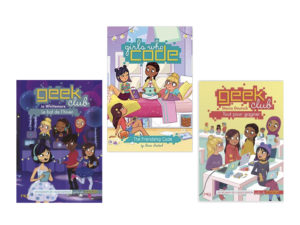 |
Girls who code. This collection of novels is the origin of an initiative of the American association “Girls who code” whose mission is to increase the number of women in computer science. These novels are about the adventures of girls who are passionate about computers and their mission is to break the stereotypes often associated with programming. These books deliver a positive message about programming, and they comfortably tie together easy-to-follow coding instructions. It is a collection of 3 volumes perfect for pre-teens aged 9 to 12. |
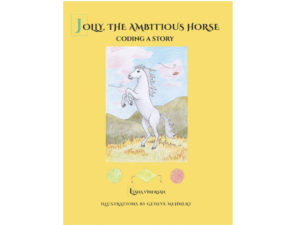 |
This book is the story of an ambitious horse who faces challenges to make his dream come true. The story is structured so that children can indirectly understand the fundamentals of programming.
|
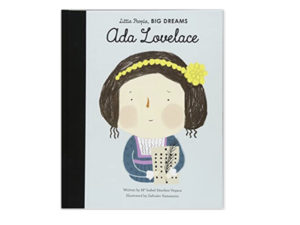 |
 “Little People, Big dream”“Little People, Big dream”, is a collection of children’s books that features a series of portraits highlighting various inspiring personalities in history and especially in science. For the curious mind, one discovers here Ada Lovelace’s life and her first love for logic which will lead her to create the world’s first computer program. |
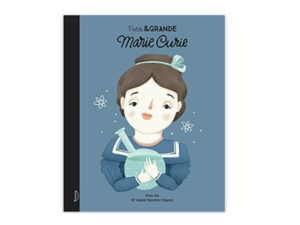 |
 “Little People, Big Dream”, is a collection of children’s books that features a series of portraits highlighting various inspiring personalities in history and especially in science. Curious minds here discover Marie Curie’s life, who was awarded the Nobel Prize in Physics for her discoveries on radium and polonium, which greatly helped in the fight against cancer. |
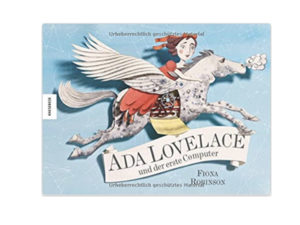 |
Ada Lovelace und der erste Computer. This book for children from 6 years old illustrates the biography of the famous Ada Lovelace, a young English girl living in the 19th century and passionate about mathematics. She will become the first scientist to create a computer program. |
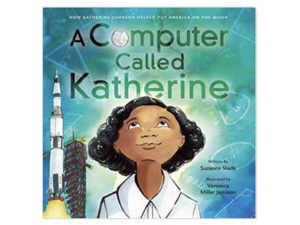 |
A Computer called Katherine.Based on the inspiring true story of mathematician Katherine Johnson, known to have played an indispensable role at NASA through her calculations when sending the first man to the moon. As a woman of African-American descent, Katherine Johnson achieved a brilliant career by overcoming all stereotypes and obstacles. |
 |
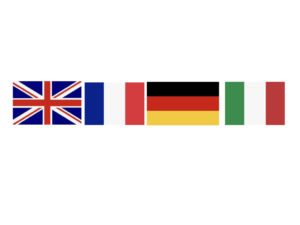 Digital Kidz suggests a few activities to teach children some concepts of programming without screen. Sequencing for example, ensure that a task is performed in a correct order. Below you will find sequencing activities where students need to guess and draw the logical continuation either with arrows or by repeating the correct colore code. |